Key Takeaways
1. Buddhism: A Complex Tapestry, Not a Monolith
The first lesson the story of the blind men teaches us, then, is that Buddhism is a large and complex subject, and we should be wary of generalizations made on the basis of familiarity with any single part.
Many traditions, one core. Buddhism isn't a single, unified entity but a collection of diverse traditions, schools, and sects. It's like an elephant, with each part (Theravada, Mahayana, Zen, Tibetan, etc.) offering a different perspective. Generalizations like "Buddhists believe..." are often misleading without specifying which tradition is being referenced.
- The term "Buddhism" itself is a Western construct, only becoming established in the 1830s.
- It's more accurate to speak of "Buddhisms" (plural) to acknowledge the diversity.
- The tendency to "essentialize" Buddhism (assuming it's monolithic) is a mistake.
Cultural lenses. Our own cultural backgrounds and biases influence how we perceive and interpret Buddhism. We tend to project our own beliefs and values onto it, leading to misunderstandings. It's crucial to be aware of "culture blindness" and avoid assuming that Western categories automatically apply to other cultures.
- The West has a tendency to construct an "Orient" that reflects its own shadow side.
- Even experts can "read back" their own assumptions into the data.
- We must be wary of cultural stereotypes when studying other cultures.
Religion redefined. Buddhism challenges traditional Western definitions of religion, particularly the emphasis on belief in a creator God. It lacks a creator god, yet it has many of the other dimensions of religion. It has rituals, experiences, myths, doctrines, ethics, social structures, and material culture.
- Buddhism is often categorized as "atheistic" or "non-theistic," but these terms are inadequate.
- The concept of a creator god may not be the defining characteristic of all religions.
- Ninian Smart's seven dimensions of religion provide a more inclusive framework.
2. The Buddha's Journey: From Prince to Awakened One
The Buddha’s personal experience of enlightenment is the bedrock of the entire Buddhist tradition.
A life of transformation. Siddhartha Gautama, the Buddha, was born a prince but renounced his privileged life to seek spiritual truth. His journey involved experimenting with extreme asceticism and meditation, ultimately leading to his enlightenment.
- Traditional dates for his life are 566-486 BC, but more recent research suggests around 410 BC for his death.
- He was married at 16, had a son, and left home at 29.
- He attained enlightenment at 35 and spent 45 years teaching.
The Four Signs. The Buddha's disillusionment with palace life was triggered by encountering old age, sickness, death, and a religious mendicant. These "four signs" revealed the transient nature of human existence and inspired his spiritual quest.
- The story of the four signs is likely a parable, not a literal account.
- It represents the dawning of a realization about the nature of human life.
- Most people construct mental barriers to keep unpleasant realities at bay.
Enlightenment and teaching. After abandoning extreme austerities, the Buddha attained enlightenment while meditating under a Bodhi tree. He then spent the rest of his life teaching the Dharma, or the path to liberation, out of compassion for all beings.
- He recalled past lives, saw the cycle of rebirth, and eliminated his defilements.
- He preached his first sermon, setting in motion the "wheel of Dharma."
- He established the order of monks and nuns (Sangha).
3. Karma and Rebirth: The Cycle of Cause and Effect
It is choice (cetanā), O monks, that I call karma; having chosen one acts through body, speech, or mind.
The endless cycle. The concept of samsara describes the continuous cycle of birth, death, and rebirth. All living beings are part of this cycle, driven by karma, until they attain nirvana.
- Reincarnation was a pre-existing belief in India, but Buddhism linked it to karma.
- The number of rebirths is almost infinite.
- The cycle is like a river, always moving.
The Buddhist universe. Buddhist cosmology divides the universe into physical realms and the beings that inhabit them. These realms are not static but undergo cycles of evolution and decline.
- The universe is formed by the interaction of five elements: earth, water, fire, air, and space.
- World systems evolve, endure, disintegrate, and are destroyed.
- The moral status of inhabitants influences the fate of the world system.
Karma's mechanics. Karma is not a system of divine rewards and punishments but a natural law of cause and effect. Moral actions shape character and future rebirths.
- Karma is defined by intention and choice (cetanā).
- Moral actions have both transitive (impact on others) and intransitive (impact on the agent) effects.
- Good actions create merit (puñña), while bad actions create negative karma.
4. The Four Noble Truths: The Core of Buddhist Teaching
Both in the past and now, I set forth only this: suffering and the end of suffering.
The diagnosis of suffering. The Four Noble Truths are the foundation of Buddhist teaching, diagnosing the human condition as one of suffering (dukkha) and offering a path to liberation. The first truth acknowledges that life is inherently unsatisfactory.
- Suffering includes physical pain, emotional distress, and existential unease.
- It encompasses birth, sickness, old age, death, and the frustration of unfulfilled desires.
- The five factors of individuality (body, sensations, cognitions, character, consciousness) are also sources of suffering.
The cause of suffering. The second truth identifies craving (taṇhā) as the root cause of suffering. This craving manifests as a thirst for sensual pleasure, existence, and non-existence.
- Craving fuels the cycle of rebirth.
- It is driven by greed, hatred, and delusion.
- Not all desire is negative; positive desires (chanda) are essential for spiritual progress.
The cessation of suffering. The third truth states that suffering can end through the cessation of craving, leading to nirvana. Nirvana is both a concept and an experience.
- Nirvana is the "blowing out" of greed, hatred, and delusion.
- It is a state of peace, joy, compassion, and refined awareness.
- Final nirvana is the end of rebirth, but its nature is beyond description.
The path to liberation. The fourth truth outlines the Eightfold Path as the way to end suffering. This path is a "middle way" between indulgence and austerity, encompassing morality, meditation, and wisdom.
- The Eightfold Path includes right view, resolve, speech, action, livelihood, effort, mindfulness, and meditation.
- It is a path of self-transformation, leading to the development of virtue and knowledge.
- It is not a linear progression but a continuous cultivation of these eight factors.
5. Mahayana Buddhism: The Path of Compassion and Universal Salvation
Rather than seeking one’s own salvation, in the way the earlier teachings had advised, the Mahāyāna places great emphasis on working to save others.
A new emphasis on compassion. Mahayana Buddhism, the "Great Vehicle," emerged as a more inclusive path to salvation, emphasizing compassion (karuna) and the bodhisattva ideal. It contrasts with the earlier emphasis on individual liberation.
- The bodhisattva is someone who vows to work tirelessly to lead others to nirvana.
- It is a path of selfless service and love for all beings.
- The Mahayana sees the Buddha as a more distant and exalted figure.
The three bodies of the Buddha. The Mahayana developed a new "Buddhology," envisioning the Buddha as having three bodies: earthly, heavenly, and transcendent.
- The earthly body (nirmāṇakāya) is the historical Buddha.
- The heavenly body (sambhogakāya) is in a blissful realm.
- The transcendent body (dharmakāya) is identical with ultimate truth.
New scriptures and teachings. The Mahayana produced new scriptures (sutras) that claimed the Buddha had revealed only limited teachings to his early followers. The full truth was now revealed in the Mahayana.
- The Lotus Sutra is a key text, using parables to explain the Mahayana.
- The doctrine of "skilful means" (upaya) allows for flexibility in teaching and practice.
- The Six Perfections (generosity, morality, patience, courage, meditation, wisdom) are central to the bodhisattva path.
6. Buddhism's Global Spread: A Journey Across Asia
Go, Monks, and wander for the good and welfare of the multitudes.
Ashoka's influence. The spread of Buddhism was greatly aided by Emperor Ashoka, who converted to Buddhism and promoted it throughout his empire. He sent missionaries to other parts of Asia.
- Ashoka ruled in the 3rd century BC and was a major figure in Indian history.
- He ruled according to Buddhist principles and promoted non-violence.
- His missions helped establish Buddhism in Sri Lanka and other regions.
Theravada in the South. Theravada Buddhism, the "Doctrine of the Elders," predominates in South Asia, particularly in Sri Lanka, Burma (Myanmar), and Thailand.
- Sri Lanka played a crucial role in preserving the Pali Canon.
- Buddhaghosa was an important scholar who compiled and edited early commentaries.
- Monks have played a significant role in the social and political life of these countries.
Mahayana in the North. Mahayana Buddhism spread north into Central Asia, China, Japan, and Tibet. It adapted to local cultures and developed diverse forms.
- Buddhism entered China in the 1st century AD, interacting with Confucianism and Taoism.
- Zen Buddhism developed in China (Chan) and Japan, emphasizing meditation and spontaneity.
- Tantric Buddhism (Vajrayana) flourished in Tibet, using rituals, symbols, and mantras.
7. Meditation: The Path to Inner Transformation
The goal of meditation is not to be ‘elsewhere’ but to be right here, fully conscious and aware.
A tool for self-transformation. Meditation (samadhi or bhavana) is a central practice in Buddhism, used to cultivate inner peace, wisdom, and enlightenment. It is a controlled altered state of consciousness.
- It is a way of "making oneself what one wishes to be."
- It is not about escaping reality but about being fully present.
- It involves controlling the mind and body.
Calming and insight. Buddhist meditation includes two main types: calming meditation (samatha) and insight meditation (vipassana). Calming meditation focuses on concentration and inner stillness.
- It involves choosing a meditation object (e.g., breath, mantra).
- It leads to states of absorption (jhana).
- It can develop psychic powers.
Insight meditation. Insight meditation involves analyzing one's own experience to gain wisdom. It is a reflexive analysis of the meditator's own state of mind.
- It involves observing the body, feelings, mood, and thoughts.
- It leads to the realization of impermanence and the absence of self.
- It breaks the pattern of stimulus-response and frees the mind from craving.
8. Buddhist Ethics: The Path of Non-Harm and Compassion
At the heart of Buddhist ethics is the principle of non-harming (ahiṃsā), which manifests itself in the respect for life for which Buddhism is renowned.
Dharma as a moral guide. Buddhist ethics are based on Dharma, a universal law that governs both the physical and moral orders of the universe. It is a natural law discovered by enlightened beings.
- Dharma is the principle of order and regularity.
- It is manifest in the law of karma.
- Living in accordance with Dharma leads to happiness and liberation.
The Five Precepts. The Five Precepts are the basic ethical guidelines for lay Buddhists, emphasizing non-harming and self-discipline.
- They prohibit killing, stealing, sexual immorality, lying, and taking intoxicants.
- They are not commandments but guidelines for virtuous living.
- They are taken voluntarily, reflecting the free nature of moral choice.
Virtues and skillful means. Buddhist ethics emphasizes the cultivation of virtues such as non-attachment, benevolence, and understanding. It also includes the concept of "skilful means" (upaya), which allows for flexibility in applying ethical principles.
- Virtues counteract negative dispositions like pride and selfishness.
- Skilful means allows for bending rules in the interest of compassion.
- The goal is to act from a place of wisdom and compassion.
9. Buddhism in the West: A Modern Adaptation
The study of Buddhism over the past two centuries or so has resembled the encounter of the blind men and the elephant in many ways.
Early Western encounters. Buddhism remained largely unknown in the West until the 19th century. Early contacts were limited to travelers and missionaries.
- Marco Polo encountered Buddhism in China in the 13th century.
- Jesuits in China and Japan were intrigued by Buddhism.
- Serious academic study began in the 19th century.
Academic and cultural influences. Western scholars, philosophers, writers, and artists have played a key role in introducing Buddhism to the West.
- T.W. Rhys Davids founded the Pali Text Society.
- Arthur Schopenhauer was the first major Western philosopher to take an interest in Buddhism.
- Edwin Arnold's "The Light of Asia" popularized Buddhism in the Victorian era.
Immigration and modern growth. Buddhist immigration from Asia has contributed to the growth of Buddhism in the West. All major forms of Buddhism are now represented in the West.
- Immigrants from China, Japan, and Southeast Asia have established communities.
- Tibetan lamas have also established centers in the West.
- Many Westerners have converted to Buddhism, drawn to its rational and ethical teachings.
Last updated:
Review Summary
Buddhism: A Very Short Introduction is generally praised as a concise yet comprehensive overview of Buddhism. Readers appreciate its accessible explanations of core Buddhist concepts, history, and practices. The book is noted for its objectivity and academic approach. Some readers found certain sections challenging or felt the Western perspective was overly emphasized. Many reviewers recommend it as a solid starting point for those interested in learning about Buddhism, though a few suggest supplementing it with other sources for a more complete understanding.
Very Short Introductions Series Series
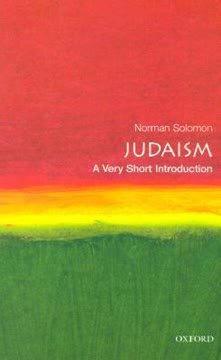
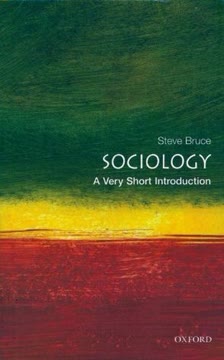
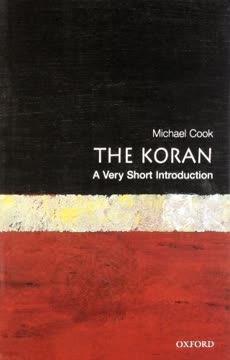
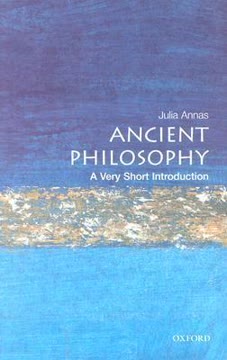

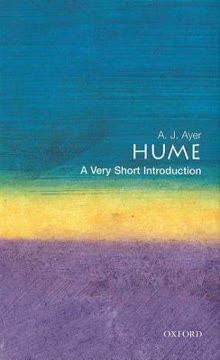

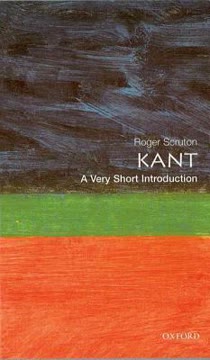
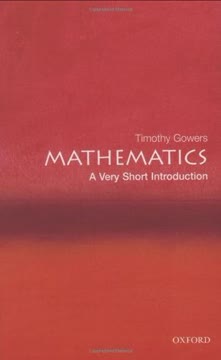
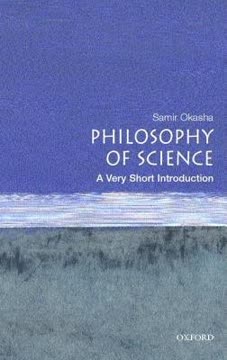

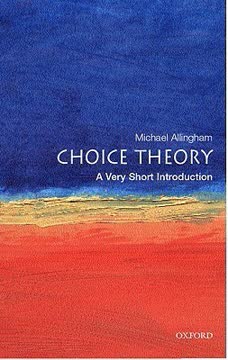
Similar Books









Download PDF
Download EPUB
.epub digital book format is ideal for reading ebooks on phones, tablets, and e-readers.




